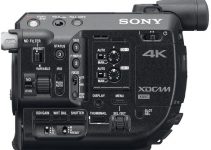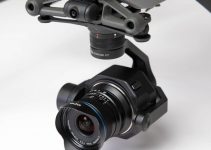Utilising light wisely and efficiently on set is something that can certainly improve your work as a professional filmmaker and make a big difference in the end. You can get some impressive results even with the most affordable lights, but only if you know how to control them properly.
The following episode of Film Riot covers five basic, but yet incredibly powerful lighting techniques that can significantly improve your lighting setup and take your work to the next level. The video isn’t focusing on specific light sources or quality, but rather on the way you can shape it, which is often a quite overlooked aspect of the creative process, especially by newbie filmmakers.
Unsurprisingly, the first technique on the list when it comes to shaping light suggests utilising bouncing light. With its soft quality, this type of light is extremely pleasing and forgiving to the actor’s face. You can quickly achieve the soft effect by enlarging the area the light is coming from.
Similarly to using a book light, you can shoot the light through a bounce first and then set up some diffuser between the bounced light and the subject. The problem with this approach, however, is the difficulty one might face to control it. This is where flagging the light comes in.
Utilising flags to control the light spills is another excellent technique that can help you enhance your lighting setup further. You can block some light by placing a few flags around your primary source of light, or you can trough them on the opposite side of your talent to use it as a negative fill. That way you’ll be able to cut the light down bouncing into your talent’s face and bring contrast back to your scene
Similar to flagging, you can skirt your light when the light source is placed above your talent. You can use this technique to make your light more directional and keep it from spilling on the walls around your actors. As a rule of thumb, try to skirt all your light sources pointing straight down to the floor to achieve more pleasing results and avoid your images looking flat and boring. For instance, if you are using a China ball attached to the ceiling, you can skirt that light by using a black material tied up to a hula hoop then hang down the whole setup.
Utilising a black wrap is other extremely useful material that can be used efficiently on set to control light leaks. Being a form-holding and heat-resistant, it can fit almost anywhere and deal with any unwanted light leaks. This material will also allow you to control unwanted reflections from shiny surfaces, plus it’s ideal for making a snoot or barn doors to control light. Just make sure you are using it in different creative ways to achieve the desired effect.
At last but not least, you can break up the light coming from your light sources. You can use anything from a cookie to a tree branch to mask light patterns onto a background. You can break up light interestingly and randomly or make it more defined and distinct. This approach can be especially useful when you are shooting an interview with a blank, flat background. Ultimately, it’s a fantastic way to improve your visuals by adding more texture and depth to your shots.
[source: Film Riot]
Disclaimer: As an Amazon Associate partner and participant in B&H and Adorama Affiliate programmes, we earn a small comission from each purchase made through the affiliate links listed above at no additional cost to you.




